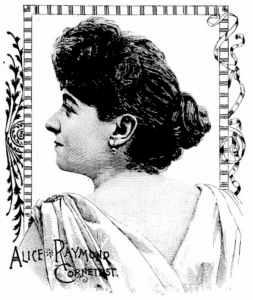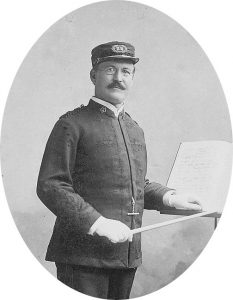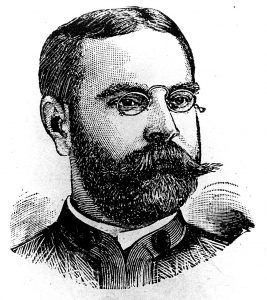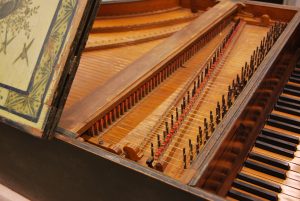This is slightly off the topic of bugling, but we must remember that the rise of the brass band coincides with the expanded adoption, and use, of bugles by militaries. So, I thought it would be an interesting excursion. The following has a focus on American bands, but British bands had a similar development.
The phonograph (the first working gramophone or record player) was not invented until 1877. Before then, the only way to hear music was live. Local wind bands and professional touring bands grew in popularity during the 19th century. Bands depended on the reed instruments at the start of the century, but the introduction of the keyed bugle after 1810 started a shift towards brass instruments. Keyed brass established their place alongside the reed instruments by 1835. The first working valves for a brass instrument were patented in 1818 and valve technology improved through the 1830s. In the 1840s Adolph Sax began marketing saxhorns which became very popular. Sax did not exactly invent them but his business savvy made them the instrument of choice.
The need for live entertainment remained through the end of the century. Famous bands such as those led by Gillmore (“The Father of the Concert Band”) and Sousa (“The March King”) toured the United States. Pianos became a must-have in middle-class homes. The need for new music was great, so, African American and Women composers started to see their music published, although many still needed to be published through white-male proxies making their names lost to history.

Women were excluded from military service, but many women were musicians including professional brass players. For example, Alice Raymond was a cornet virtuoso in the United States who toured the major cities of America and Canada. She was awarded a gold medal at the St. Louis Exposition. Raymond also played with the US Marine Band for the President of the United States.
Many bands consisted entirely of women, including military-style bands. Helen May Butler (1867-1957) is known as the “Female Sousa.” She was the first American Woman to lead a professional band. Butler began the Talma Ladies Orchestra in 1892 and founded Talma Ladies Military Band in 1896. She conducted at the Barnum & Bailey Show, and at the White House on invitation from President Teddy Roosevelt. When Sousa’s band manager recognized her in a crowd she was invited backstage to meet Sousa. Sousa unexpectedly gave her the honor of conducting his band in Semper Fidelis. Butler led her Ladies Orchestra and the Military Band to being considered among the best bands in the world. She was also an accomplished cornet player, despite having trouble finding a teacher willing to train a woman.




